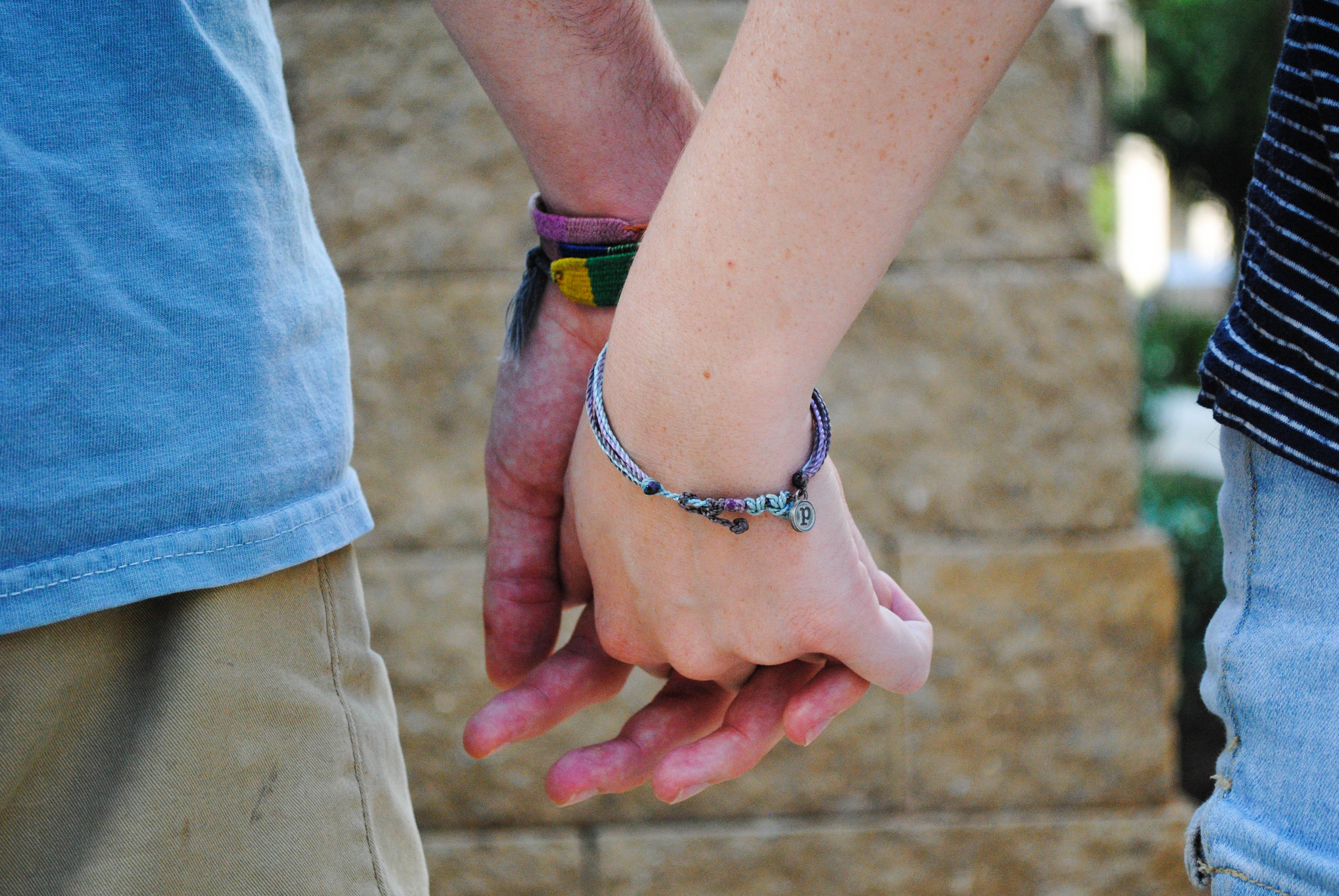Guest commentary by Jessica Fisher
The most often cited study (conducted in 2011) by the Williams Institute suggests to us that there are 700,000 adults in the United States who identify as transgender. According to a 2012 piece by Matthew J. Lindenberg points out a disturbing fact, “Unfortunately there is no definitive information on the number of transgender students.”
 So when Matthew Palminteri talks about ‘He and She’ and ‘two genders’, who are they talking about? When they talk about ‘our fundamental biological difference’ to what are they refering? When Palminteri says that the ‘average man is significantly stronger than a woman’ (instead of ‘stronger than the average woman’?) to whom are they refering? Might the ‘a woman’ they are refering to be a woman like myself? Are they referring to MMA/UFC fighter Fallon Fox?
So when Matthew Palminteri talks about ‘He and She’ and ‘two genders’, who are they talking about? When they talk about ‘our fundamental biological difference’ to what are they refering? When Palminteri says that the ‘average man is significantly stronger than a woman’ (instead of ‘stronger than the average woman’?) to whom are they refering? Might the ‘a woman’ they are refering to be a woman like myself? Are they referring to MMA/UFC fighter Fallon Fox?
How do we define ‘stronger’? Is someone stronger because of how they perform in a weight room or during moving day?
Palminteri does purport to be talking about biology. I’m not a biologist, I’m not a biology student. I run from STEM majors and classes because it’s not an area where I do well, and I value my GPA. What am I to do? Well, luckily I can cite biologists. Julia Serano has a Ph.D in biochemistry and molecular biophysics from Columbia University and works as an Evolutionary and developmental biology researcher at UC Berkeley – she had this to say about ‘Gender Essentialism’:
“Basically, gender essentialism is the idea that there are innate characteristics which all men share with each other and innate characteristics which all women share with each other. And it leads to ideas that men are naturally aggressive, or that women are naturally nurturing and so on. And those ideas erase gender diversity. There’s lots of variation among people of different genders and a lot of overlap between the genders.”
Furthermore, from Serano’s book Excluded:
“Despite such biases and the exaggerating effect they can have, virtually all measurements of sexually dimorphic behaviors (i.e., behaviors that tend to be more common in one sex than the other) reveal a large amount of variation within each sex and significant overlap between the sexes.”
These quotes do not begin to touch on, either, the ways in which children (often based on anatomy) are encouraged to either be more passive, or more aggressive. Those deemed as boys by doctors while they are in utero are told to be aggressive, to play sports, to work out, to build muscle whereas those deemed as girls by doctors while they are in utero are told to be passive, to play with dolls, to work in the house and to build relationships.
So are those deemed women by Palminteri weaker because it was biologically pre-determined or because it was socially pre-determined?
Though I would not dare call Palminteri transphobic, as I do not know them that well, the biological ‘gender essentialism’ rhetoric they use not only feels misogynistic but transphobic as well. Do my broad shoulders make me a man? Does my strong back make me a man? Does my socially masculine genitalia make me a man? To answer ‘yes’ to any of these is transphobic.
I think what is lacking on this campus is a dialogue that is inclusive and aware of transgender people – our critical conversations continue to go on without ever considering that there are more than two genders, that there are more than ‘He and She’. Once we realize this, then we can realize that there is more to what makes up a person’s gender than simple biology.
Palminteri wants to recognize that ‘sexes do in fact differ in some ways’, but they are not willing to accept any idea that those difference subvert their ideas of men as more aggressive and women as having tendencies to be nurturers and caregivers. I cannot help but to notice the way that Paminteri asserts as an absolute that men are aggressive – refusing to give up this aggressiveness, but is willing to bend that women are more than nurturers and caregivers? What are women, when they are not nurturers and caregivers? The bodies that men aggress? The vessel wherein fetuses can be carried into human-hood – so that maybe women can become these nurturers and caregivers? Palminteri does say, after all that it makes sense that women be nurturers and caregivers, after all, they are the ones who give birth. Palminteri’s transphobic definition of what makes a woman excludes me.
~ Jessica Fisher is a Junior majoring in Communication
http://www.theatlantic.com/national/archive/2013/09/gender-as-non-fiction/279962/
Agree or disagree? Use the Leave a Reply field below or submit your own Guest Column.
Disclaimer: The views and opinions expressed in columns on this page and in the Opinion Section are those of the authors and do not necessarily reflect the official policy or position of The Sentinel, KSU Student Media, Kennesaw State University, or the Georgia Board of Regents.





IFTSU at HeForShe UNWomen Conference
http://youtu.be/rdyDqnI6AQQ
Thanks for this thoughtful and informed critique of Palminteri’s article, both its blatant gender essentialism and its resulting trans-erasure. From Palminteri’s foundational error–conflating equality and sameness in the opening lines–it was clear that we were reading yet another un-interrogated recitation of some of the sloppiest, most contradictory popular beliefs about gender. As a member of a scholarly community, I examine evidence when considering the integrity of arguments; where Palminteri is speaking from his own experience, his own limited vision, and his own set of biases, Fisher is presenting a researched and documented counter-argument. Finally. Let’s get back to scholarly work, KSU.
It upsets me greatly to have my arguments misunderstood in such a drastic way. I have submitted an article in which I address Jessica’s article, in hopes everyone can better understand my thoughts on this subject.
Citizen Kate, this or any other article in the KSU Sentinel (including mine) is not scholarly. For you to claim to be part of the scholarly community, but not understand what makes something scholarly is of concern.
Citizen Kate is thankful for Jessica’s “thoughtful and informed critique,” and I have to agree, it is thoughtful. Unfortunately, it is not an “informed critique” of Palminteri’s article. It would seem that his entire thesis was aimed at establishing that regardless of our differences (be it race or sex), we are all equally valuable as human beings, and we should cherish our differences.
The word “all” is pretty straight-forward. I certainly did not read his article, and then say to myself “Well obviously when he says all humans are valuable, he is excluding the transgender.” So instead of critiquing with Palminteri’s thesis (which was originally in response to Ms. Howell’s article for neo-feminism), Jessica critiqued some of the biological facts and gender-specific language in his article.
Both Jessica and Citizen Kate label Palminteri’s beliefs and/or understanding of gender as essentialist, and then scoff as if a label alone is a refutation. Kate mocks Palminteri’s appeal to experience (common sense), and continues with an ad hominem string of silliness, after which she concludes by appealing to the epistemological integrity and rigor of her own field. This is not persuasive argumentation.
As a biological fact, humans are indeed sexually dimorphic. Even Jessica’s citations admit to this. Although there are cases where chromosomal anomalies occur (e.g., Klinefelter syndrome), the fact is that the vast majority (as in greater than 99.99%) of people are quickly identifiable as either male or female, from the cellular level to the macroscopic. It is goes against common sense (Palminteri’s appeal), as well as what we understand of both anatomy and physiology. To suggest other wise is to deny physical reality.
I will take it a step further than Palminteri and suggest that aside from Jessica’s philosophically untenable positions (this idea of no gender whilst still appealing to a particular gender), I would argue that in an effort to sustain this abused notion of “tolerance” (whereby it is wrong, and even hateful to disagree), advocates of transgender not only argue for equality (which is just and proper), but are comfortable with twisting scientific facts (the notion of two sexes) in order to justify what is and should be understood as a psychiatric disorder. But of course, this is neither politically correct nor “tolerant,”
What does the medical community typically do when an individual’s beliefs contradict physical reality (a person believes that believes that they are a gender opposite of the one that corresponds to reality)? We offer that person help, but we should not enable.
Citizen Kate is thankful for Jessica’s “thoughtful and informed critique,” and I have to agree, it is thoughtful. Unfortunately, it is not an “informed critique” of Palminteri’s article. It would seem that his entire thesis was aimed at establishing that regardless of our differences (be it race or sex), we are all equally valuable as human beings, and we should cherish our differences.
The word “all” is pretty straight-forward. I certainly did not read his article, and then say to myself “Well obviously when he says all humans are valuable, he is excluding the transgender.” So instead of critiquing with Palminteri’s thesis (which was originally in response to Ms. Howell’s article for neo-feminism), Jessica critiqued some of the biological facts and gender-specific language in his article.
Both Jessica and Citizen Kate label Palminteri’s beliefs and/or understanding of gender as essentialist, and then scoff as if a label alone is a refutation. Kate mocks Palminteri’s appeal to experience (common sense), and continues with an ad hominem string of silliness, after which she concludes by appealing to the epistemological integrity and rigor of her own field. This is not persuasive argumentation.
As a biological fact, humans are indeed sexually dimorphic. Even Jessica’s citations admit to this. Although there are cases where chromosomal anomalies occur (e.g., Klinefelter syndrome), the fact is that the vast majority (as in greater than 99.99%) of people are quickly identifiable as either male or female, from the cellular level to the macroscopic. It is goes against common sense (Palminteri’s appeal), as well as what we understand of both anatomy and physiology. To suggest other wise is to deny physical reality.
I will take it a step further than Palminteri, and suggest that aside from Jessica’s philosophically untenable positions (this idea of no gender whilst still appealing to a particular gender), I would argue that in an effort to sustain this abused notion of “tolerance” (whereby it is wrong, and even hateful to disagree), advocates of transgender not only argue for equality (which is just and proper), but are comfortable with twisting scientific facts (the notion of two sexes) in order to justify what is and should be understood as a psychiatric disorder. But of course, this is neither politically correct nor “tolerant,”
What does the medical community typically do when an individual’s beliefs contradict physical reality (a person believes that believes that they are a gender opposite of the one that corresponds to reality)? We offer that person help, but we should not enable.